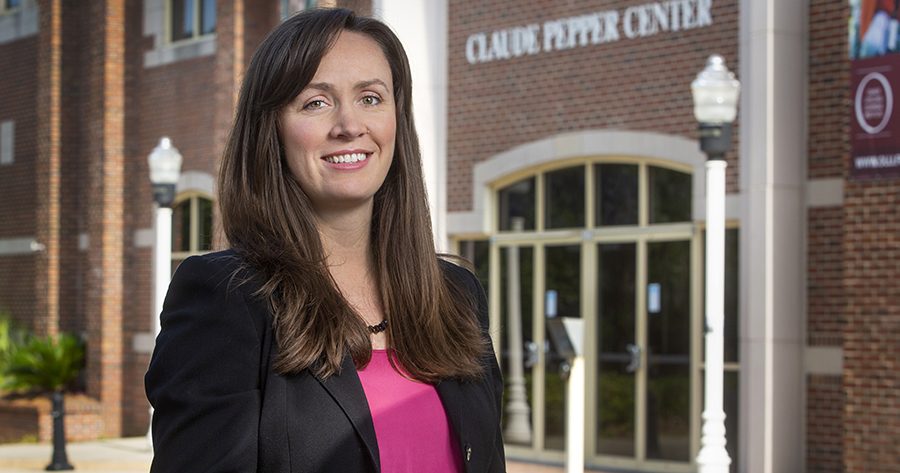
A study co-authored by a Florida State University researcher has found COVID-19 is disproportionately affecting people of color in the United States.
Patricia Homan, assistant professor of sociology and associate at the Pepper Institute on Aging and Public Policy at FSU, said she and her fellow researchers found that the difference between how COVID-19 affects older, white communities versus their Black and Latinx counterparts is stark.
The study, “The Color of COVID-19: Structural Racism and the Pandemic’s Disproportionate Impact on Older Black and Latinx Adults,” is published in the Journals of Gerontology. Homan authored the study with Marc Garcia and Catherine Garcia of the University of Nebraska and Tyson Brown of Duke University.
While drawing data from the Centers for Disease Control, the U.S. Bureau of Labor Statistics, academic literature and news sources, the study found that the COVID-19 death rate amongst Black adults age 65 and older is about three times the death rate compared to whites in the same age group. Latinx persons 65 years or older are two times more likely than their white cohorts to die from the novel coronavirus.
The results are symptomatic of larger structural forms of racism that manifest themselves throughout Black and Latinx communities across the nation, said Homan.

“We have systems of inequality embedded throughout major social institutions,” she said. “There are racial and ethnic wealth gaps and employment segregation. White households have more wealth. Black and Latinx people are more likely to live in crowded, multigenerational households with an inability to isolate if exposed to COVID.”
She continued: “We know that Black and Latinx people are overrepresented in high-contact jobs, like food services and retail. Jobs that don’t offer insurance or paid sick leave. So, they have to keep working outside the home because they need the money. Again, this puts them at increased risk of COVID exposure.”
The toll of living a life in a society where instances of discrimination compound daily, a factor Homan and her co-authors call Weathering Processes, also causes premature aging and the health complications that accompany it.
“We know from previous studies, these communities experience health deterioration earlier in life and have steeper, more rapid declines in their health as a result of accumulated exposure to racism over the course of their life,” she said.
Access to quality health care is also an aggravating factor, the study found. Black and Latinx people tend to be concentrated in low-wage jobs with no benefits like employer-sponsored health insurance. Additionally, residential segregation shapes the distribution of care, steering minorities to hospitals that tend to be overwhelmed and where quality suffers as a result.
“We know when Black and Latinx people do access care they receive lower quality of care and face other structural inequalities and physician bias,” she said. “Minorities have longer wait times and are less likely to have their pain appropriately managed and effectively treated.”
The factors that help explain the disparity in COVID-19’s effects are complex and rolled into a much larger conversation about race, Homan said.
“It won’t change unless we reduce structural racism,” she said. “In criminal justice, education, health care and employment to name a few, we need social policies to reduce systemic inequality and that will produce better population health.”
For more information, visit https://academic.oup.com/psychsocgerontology/advance-article/doi/10.1093/geronb/gbaa114/5881410#.XywKMhPDAAB.twitter




